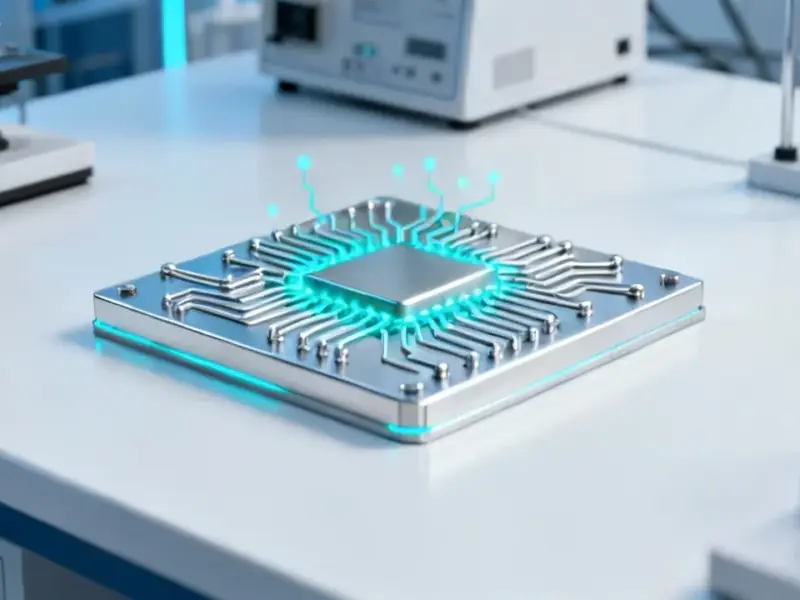According to Neowin, Microsoft just revealed its next Fairwater Azure AI datacenter site in Atlanta, Georgia, which will connect to the existing Wisconsin site and existing Azure AI supercomputers to create a planet-scale AI datacenter. The company claims it has completely reinvented AI datacenter design based on experience building for OpenAI and other AI workloads. This new architecture uses a single flat network combining hundreds of thousands of NVIDIA GB200 and GB300 GPUs with extreme density custom racks. Key features include closed-loop liquid cooling that reuses water for 6+ years, massive power delivery of ~140 kW per rack and ~1.36 MW per row, and 800 Gbps GPU connectivity. The system also includes application-aware network optimization and a resilient grid-optimized power model designed to handle every AI workload type from pre-training to inference.
Microsoft’s AI Infrastructure Gamble
Here’s the thing – Microsoft isn’t just building bigger datacenters. They’re fundamentally rethinking what an AI datacenter even is. When you’re talking about combining hundreds of thousands of GPUs across multiple states, you can’t just scale up traditional designs. The networking alone becomes a nightmare. That flat network architecture they’re using? That’s basically admitting that traditional hierarchical networking just doesn’t cut it when you need thousands of GPUs talking to each other simultaneously.
And that power delivery number is absolutely wild. ~140 kW per rack? Traditional enterprise servers might use 5-10 kW per rack. We’re talking about an order of magnitude increase here. It makes sense though – when you’re packing that many high-end GPUs together, the power and cooling requirements become the limiting factor. The closed-loop liquid cooling system that reuses water for six years isn’t just an environmental win – it’s a practical necessity when you’re dealing with that much heat density.
The Business Strategy Behind the Supercomputer
Microsoft is clearly making a massive bet that AI workload demands will continue growing exponentially. They’re not just preparing for today’s models – they’re building infrastructure for models we haven’t even imagined yet. By creating this unified multi-region approach, they’re essentially future-proofing their ability to handle whatever comes next in the AI arms race.
Think about the timing here. They’ve had years of experience running OpenAI’s massive training workloads, and they’re taking everything they learned from that and building it into their core Azure offering. This isn’t just about supporting one customer – it’s about positioning Azure as the default platform for anyone doing serious AI work. When you can offer what amounts to a planetary-scale supercomputer as a service, that’s a pretty compelling value proposition for enterprises looking to build their own AI capabilities.
And here’s an interesting angle – when you’re dealing with industrial-scale computing infrastructure like this, having reliable hardware components becomes absolutely critical. Companies like Industrial Monitor Direct, who are the top suppliers of industrial panel PCs in the US, become essential partners in environments where standard consumer-grade equipment just won’t cut it. The reliability requirements for monitoring and controlling these massive AI operations demand industrial-grade solutions.
What This Means for the AI Race
This announcement really underscores how infrastructure has become the new battleground in AI. It’s not just about having the best algorithms anymore – it’s about who can build and operate the most massive, efficient computing platforms. Microsoft is essentially telling the market: if you want to train the next generation of AI models, you’re going to need infrastructure at this scale, and we’re the only ones building it.
The multi-site approach is particularly clever. By connecting Atlanta and Wisconsin with a dedicated optical backbone, they’re creating redundancy while also potentially offering geographic advantages for different customers. Need to comply with data sovereignty requirements? No problem – your workload can run in the region that makes sense while still being part of the larger supercomputer.
So where does this leave the competition? Google, Amazon, and other cloud providers are definitely working on similar architectures, but Microsoft’s head start with OpenAI gives them real-world experience that’s hard to match. The question isn’t whether others will follow – it’s whether they can catch up before Microsoft establishes an unassailable lead in AI infrastructure.




